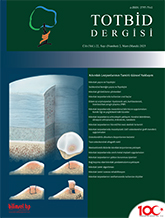
Many surgical techniques have been developed for the treatment of cartilage defects. Techniques can be divided into four categories with clear surgical goals: Debridement, repair, regeneration and tissue transfer or prosthesis. One-piece osteochondral autograft transfer (OAT), composed of surface articular cartilage and attached subchondral bone, is able to reliably restore the natural osteochondral architecture with hyaline surface cartilage, with bone-to-bone subchondral healing. Potential donor site morbidity and limited donor site availability are main disadvantages. Symptomatic defects with lesion size 1-2 cm in diameter or 1-4 cm2 surface area are optimal lesions for OAT. For good clinical results, it is necessary to plan the surgical procedure well, such as successfully harvesting the osteochondral autograft and transferring the graft to the defected area. Depending on the lesion size, it may be necessary to use a single or multiple grafts. The procedure can be performed arthroscopically or by performing an arthrotomy in difficult accessibility. Possible simultaneous malalignment, joint instability and meniscal lesions should also be evaluated before and treatment should be planned simultaneously if necessary. Successful clinical outcomes are possible with correct patient selection and technique.